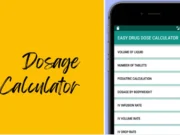What is Cost Per Impression Calculator?
A cost per impression calculator is a tool that enables advertisers to determine how much they are spending for each impression of their ads. Users input their total ad spend and the number of impressions received, and the calculator computes the CPI. This tool simplifies the process of evaluating ad performance and helps marketers make informed decisions about their advertising strategies. By using a CPI calculator, businesses can optimize their ad budgets and ensure they are effectively reaching their target audiences without overspending.
What is Cost Per Impression?
Cost per impression (CPI) is the amount advertisers pay each time their ad is displayed to potential customers. It’s a key metric in online advertising that helps assess the effectiveness of ad spending. CPI allows advertisers to understand the cost of reaching their target audience, providing insights into budget allocation and campaign performance. A lower CPI typically indicates a more efficient ad campaign, enabling advertisers to maximize exposure while minimizing costs. By analyzing CPI, businesses can optimize their marketing strategies and improve overall return on investment.
How to Use Cost Per Impression Calculator?
To use the cost per impression calculator, first enter your total advertising spend in the provided input field. Next, input the total number of impressions that your ads have received. After filling in these fields, click the "Calculate" button to see your cost per impression. If you want to reset the fields for a new calculation, simply click the "Clear" button. This straightforward process allows you to analyze your advertising costs quickly and efficiently, facilitating better budget management.
Calculator
What is a good cost per impression?
A good cost per impression (CPI) varies by industry and advertising platform. Generally, a lower CPI indicates better efficiency. However, the ideal CPI should also align with your campaign goals. Evaluating your target audience, ad placement, and overall budget can help determine if your CPI is favorable. Comparing your CPI with industry benchmarks can provide valuable insights into your campaign's effectiveness.
How can I reduce my cost per impression?
To reduce your cost per impression (CPI), consider optimizing your ad targeting to reach a more relevant audience. Utilize A/B testing for your creatives to identify the most effective designs and messages. Additionally, explore different advertising platforms to find lower-cost options. Monitoring campaign performance regularly and adjusting bids can also help improve your CPI over time.
Is CPI the same as CPM?
No, cost per impression (CPI) is different from cost per mille (CPM). While CPI focuses on the cost incurred each time an ad is displayed, CPM measures the cost per 1,000 impressions. Advertisers often use CPM for broader campaigns where impression volume is essential, while CPI provides insights on cost efficiency for specific ads or campaigns.
What factors influence CPI?
Several factors can influence cost per impression (CPI), including the advertising platform, target audience, competition, and ad quality. Platforms with higher demand may have increased CPI. Additionally, factors like seasonality and market trends can impact costs. Ad relevance and performance metrics also play crucial roles; higher-quality ads may achieve lower CPI through better engagement.
Can I track my CPI over time?
Yes, tracking cost per impression (CPI) over time is crucial for evaluating ad performance. Most advertising platforms provide analytics tools to monitor CPI alongside other key metrics. By regularly reviewing CPI trends, you can assess the effectiveness of different campaigns, identify patterns, and make informed decisions for future advertising strategies.
How does audience targeting affect CPI?
Audience targeting can significantly impact cost per impression (CPI). By honing in on a specific demographic or interest group, advertisers can improve ad relevance, leading to higher engagement rates and lower CPI. Conversely, broad targeting may result in increased costs, as the ad may be shown to less interested users. Effective targeting optimizes ad spend and enhances campaign efficiency.
Are there tools to help calculate CPI?
Yes, various online tools and calculators can assist in calculating cost per impression (CPI). Many advertising platforms offer built-in calculators as part of their analytics dashboards. Additionally, third-party marketing tools and spreadsheets can help track costs, impressions, and CPI over time. These resources are invaluable for marketers seeking to optimize their advertising budgets.
Can CPI affect my marketing strategy?
Yes, understanding your cost per impression (CPI) is vital for shaping your marketing strategy. A high CPI may indicate inefficiencies, prompting a reassessment of your target audience, ad content, or placement. By analyzing CPI trends, you can refine your approach, allocate budget more effectively, and ultimately improve the return on investment for your marketing efforts.
What is a bad CPI?
A bad cost per impression (CPI) varies by industry, but generally, a CPI that significantly exceeds industry benchmarks can be considered unfavorable. A high CPI indicates that you may be paying too much for ad exposure without achieving sufficient engagement. It's important to evaluate your CPI relative to your campaign goals and make necessary adjustments to improve efficiency.
How often should I calculate CPI?
Calculating cost per impression (CPI) should be done regularly, especially during and after advertising campaigns. Frequent assessments allow you to identify trends, measure ad performance, and make informed decisions for future campaigns. Regularly evaluating CPI ensures that you can optimize your budget and improve the overall effectiveness of your advertising strategy.
Is CPI relevant for all types of advertising?
While cost per impression (CPI) is most commonly associated with digital advertising, it can be relevant across various advertising formats. Understanding CPI helps assess the effectiveness of any ad campaign, whether online or offline. However, its importance may vary based on the campaign's objectives and the measurement metrics used for different advertising channels.
Related Calculator-












